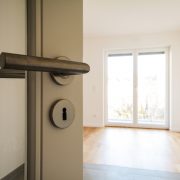Senior Living Terminologies You Should Familiarize for Better Decision-Making
Knowing and understanding the terminologies often used in senior living will guide you in making a better decision when the time comes to plan for your future. This is especially true with regards to the names and acronyms of agencies that are responsible for ensuring the safety of seniors.
Senior Living Terms and Definitions
Accreditation
This refers to a designation or seal of approval that a facility receives from an independent governing body. This indicates that a community or service provider has met specific requirements set by the controlling body.
This guarantees that a care home has the required equipment, accommodation, and staff as designated by the governing body.
American College of Healthcare Administrators (ACHCA)
This non-profit professional membership association provides care administrators with educational programming, career development, and certification opportunities. A carer certified by the ACHCA has received the proper training and passed.
Activities of Daily Living (ADL)
This refers to any form of assistance provided to help a senior perform daily life-supporting tasks. Examples of which are assistance with using the toilet, bathing, dressing, eating, and moving around.
Americans with Disabilities Act (ADA)
Passed by Congress in 1980, the law is designed to prohibit discrimination on the basis of disability. It outlines a comprehensive and clear set of rules.
Adult Daycare
This refers to organizations that provide structured programs for aging individuals. These include stimulation of social activities and even rehab services for emotionally or physically disabled elderly.
Adult Family Home
This is a facility that meets the following criteria:
- Private, home-like setting
- Located in a residential neighborhood
- Serves only a limited number of residents
- Care is provided by live-in caretakers
- Provides laundry, group meals, and housekeeping
Services provided in an adult home vary from one facility to another. The facility is also known as:
- Board and care home
- Group home
- Adult foster care
- Residential care facility
- Personal care home
Aging in Place
This means seniors continue to live at home or with a family despite the decline in their mental and physical health. This usually involves renovating a home to make it suitable for senior living and hiring the services of in-home caregivers.
Assisted Living
This refers to a kind of senior living facility where housing, healthcare, and personalized support services are provided to seniors. Care programs are designed to help seniors with their daily activities and cater to their needs.
Administrator
This refers to a licensed professional that is responsible for the day-to-day operation of a nursing home independent living, assisted living, and other care communities.
Caregiver
Any person who cares for another individual, whether a trained caregiver or a family member.
Charge Nurse
A Registered Nurse (RN) or Licensed Practical Nurse (LPN) who supervises nursing care or hospital unit. Their main task is to supervise the nursing staff and their schedules. They also provide care to residents in a caring community.
Concierge Service
This service is available in most high-end senior care facilities. The role involves:
- Acquiring resources
- Arranging activities for seniors
- Providing advice in improving a senior’s quality of life
Continuum of Care
This refers to a wide range of care services designed to assist individuals throughout different health care requirements. Examples of such services are home care, hospice, nursing care, and assisted living.
There are plenty of other terminologies used in the aging sector, but the ones above should help you get started.
Oxbow Living offers Assisted Living & Memory Care out of Nebraska and to the Surrounding Cities: Ashland, South Bend, Greenwood, Murdock, Elmwood, Ithaca, Mead








